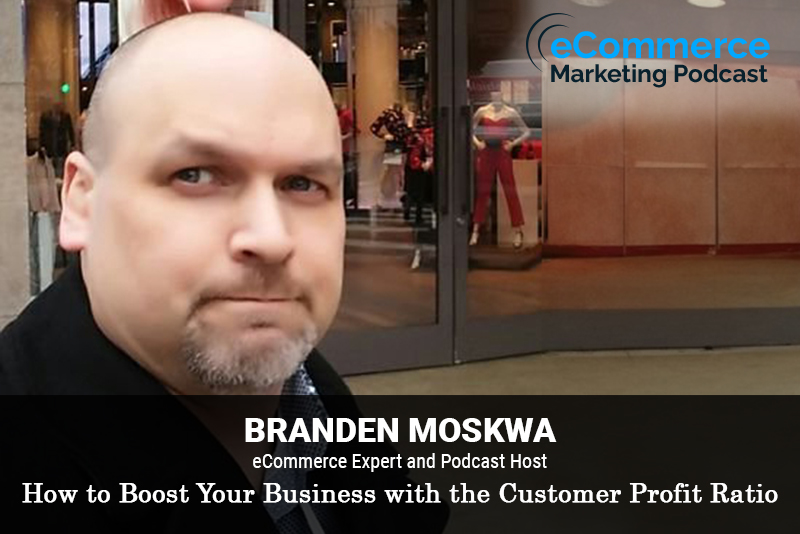
The eCommerce Marketing Podcast walks you through everything that goes into ecommerce marketing — from inbound marketing to paid advertising to conversions. Learn the strategies top marketing experts use to grow their businesses.
Branden Moskwa has been working with creative e-commerce leaders and founders who love what they do but hate the parts they need to do. He has been a sought-after futurist and thought leader by IBM, SAP and Oracle. He writes for Hackernoon, where he recently won a contributor of the year award, for his insights and interviews with DTC-focused Inc 5000 companies.
In this episode, you will learn
The Customer Profit Ratio (CPR) is and why it’s so crucial for ecommerce businesses to understand and monitor
How does CPR help in making operational and business decisions
What is the connection between CPR and marketing and how does this number help in shaping marketing strategies, particularly for ecommerce companies
How affiliate program offers as the most missed opportunity in ecommerce marketing
Strategies for ecommerce businesses to track and optimize their CPR while implementing an affiliate marketing program
For show transcript and past guests, please visit https://www.ecommercemarketingpodcast.com
Or on YouTube at:
https://www.youtube.com/channel/UC3PgT0NOGzpdPGQtBK0XLIQ
Follow Arlen:
Twitter: https://twitter.com/askarlen
Facebook: https://www.facebook.com/arlen.robinson.7
Instagram: https://www.instagram.com/arlenyohance/
LinkedIn: https://www.linkedin.com/in/arlenrobinson/
Past guests on the ecommerce marketing podcast include Neil Patel, Nemo Chu, Luke Lintz, Luke Carthy, Amber Armstrong, Kris Ruby and many more.
Thanks for listening. Be sure to subscribe and leave a review.

Title: Understanding Customer Profit Ratio and Maximizing Affiliate Program Opportunities with Branden Moskwa
Guest: Branden Moskwa, eCommerce Expert and Podcast Host
In this episode of the eCommerce Marketing Podcast, host Arlen Robinson interviews Branden Moskwa, an expert in eCommerce and a sought-after futurist and thought leader. Branden shares his insights on Customer Profit Ratio (CPR) and how eCommerce businesses can leverage affiliate programs to maximize their marketing strategies.
Key Takeaways:
- Introduction to Branden Moskwa (0:01)
- Background in tech and business, working with IBM, SAP, and Oracle.
- What is Customer Profit Ratio (CPR)? (7:45)
- An overview of CPR and its components: lifetime value, cost of acquisition, and profit margin.
- Why CPR is Crucial for eCommerce Businesses (10:30)
- CPR as an early alert system to diagnose issues quickly and predict future trends.
- Real-World Applications of CPR (12:20)
- Example of how CPR helped a client determine the optimal pricing for a new product.
- Case where CPR identified the lack of repeat customers and led to improved customer retention strategies.
- CPR as a Predictive Analysis Tool (20:00)
- How CPR can help make operational and marketing decisions.
- Affiliate Program Offers as a Missed Opportunity (25:30)
- The benefits of affiliate programs and how they can complement influencer marketing.
- Using affiliate programs to control customer acquisition costs and increase brand awareness.
- Implementing Affiliate Programs Effectively (33:45)
- Strategies for integrating affiliate programs and CPR to optimize profitability.
- Predictive vs. Reactive Analysis (38:10)
- The importance of using predictive tools like CPR to stay ahead of potential business issues.
- Closing Fun Fact about Branden (47:00)
- A story about how a message tied to a balloon traveled 3,000 miles, teaching the lesson that anything is possible.
Guest Info:
- Name: Branden Moskwa
- Title: eCommerce Expert and Podcast Host
- Contact:
- For a free 15-minute consultation: NoSalesBS.com











